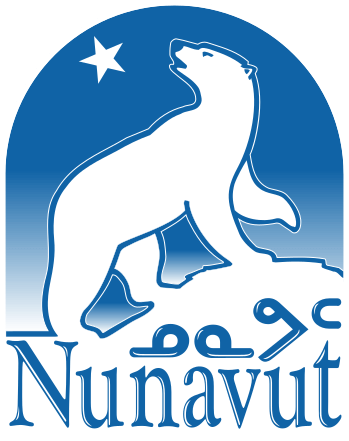ᐱᖅᖁᓯᖅ
ᐃᓄᐃᑦ ᐱᖅᖁᓯᖓᑦ ᑐᑭᖃᖅᑐᖅ ᐊᒥᓱᓂᒃ: ᐅᖃᐅᓯᖅ, ᑐᓴᐅᒪᖃᑦᑕᐅᑎᓂᖅ, ᐊᓐᓇᒃᓯᒪᓂᖅ, ᐅᒃᐱᕐᓂᕐᒧᑦ, ᑐᓂᐅᑎᖃᑦᑕᐅᑎᓂᖅ, ᐃᓐᓄᑦᑕᐅᓂᖏᑦ, ᓂᕿᓄᑦ, ᖃᑕᙳᑎᒌᓄᑦ ᐊᒻᒪᓗ ᓱᓇᓕᐅᕆᓂᕐᓄᑦ. ᐊᑐᓂ 25 ᓄᓇᓖᑦ ᓄᓇᕗᒻᒦᑦᑐᑦ ᐊᔾᔨᒌᙱᐊᕐᔪᒃᑐᑦ, ᑭᓯᐊᓂ ᐊᑕᐅᑦᑎᒃᑯᑦ ᐃᓅᓂᖏᓐᓄᑦ ᓇᓗᓇᐃᖅᓯᒪᔪᑦ ᐃᓚᒋᔭᐅᑉᓗᓂ ᐃᓄᑦᑕᐅᓂᖅ, ᐃᒃᐱᒍᓱᖕᓂᖅ, ᑐᓂᓯᖃᑦᑕᕐᓂᖅ, ᑲᒪᒋᔭᖃᕐᓂᖅ, ᐃᑲᔪᕐᓂᖅ, ᐃᒡᓚᕐᓂᖅ, ᒪᓂᒻᒥᖅᑐᕐᓂᖅ, ᓇᓗᓇᙱᓐᓂᖃᖅᑐᑦ ᐊᒻᒪᓗ ᐱᓗᐊᖅᑐᒥᑦ ᐱᔭᒃᓴᐅᑎᖃᕐᓂᕐᒥᒃ.
ᐃᓄᐃᑦ ᐱᖅᖁᓯᖓᑦ ᐊᒻᒪᓗ ᐅᖃᐅᓯᖓᑦ ᐊᕕᖕᓂᖅ ᐊᔪᕐᓇᖅᑐᖅ. ᐃᓄᐃᑦ ᐱᖅᖁᓯᖓᑦ ᑐᓂᐅᑕᐅᖃᑦᑕᖅᓯᒪᔪᖅ ᐅᖃᐅᓯᒃᑯᑦ ᑕᐃᒪᙵᓂᑐᖄᓗᒃ. ᐊᑕᐅᓯᕐᒥᒃ ᐃᓄᒃᑎᑐᑦ ᐅᖃᐅᓯᖃᖅᑐᑦ ᓄᓇᕗᒻᒥᑦ ᐊᒻᒪᓗ ᐊᒥᓱᐃᑦ ᐊᓯᐊᒍᐊᕐᔪᒃ ᐅᖃᖅᑕᐅᖃᑦᑕᕐᓗᑎᒃ. ᐃᓄᐃᑦ ᐃᖕᒥᖕᓂᒃ ᑕᐃᖃᑦᑕᖅᑐᑦ “ᐃᓄᐃᑦ”-ᖑᑉᓗᑎᒃ ᑐᑭᖃᖅᑐᖅ “ᐃᓄᐃᑦ” ᐊᒻᒪᓗ ᓄᓇᕗᑦ ᑐᑭᖃᖅᑐᖅ “ᓄᓇᕗᑦ” ᐃᓄᒃᑎᑐᑦ.
ᐃᓄᐃᑦ ᐊᓐᓇᒃᓯᒪᓂᖏᑦ ᐊᑐᖃᑦᑕᖅᓯᒪᔪᖅ ᐃᓅᑉᓗᑎᒃ ᓄᓇᒥ, ᐃᓄᐃᑦ ᐊᒻᒪᓗ ᐱᕝᕕᐅᖃᑦᑕᖅᑐᑦ. ᐃᓄᐃᑦ ᐊᖏᔪᒥᒃ ᐃᒃᐱᒍᓱᒡᕕᖃᖅᑐᑦ ᐃᓄᓗᒃᑖᓄᑦ, ᐊᕙᑎᒧᑦ, ᐊᒻᒪᓗ ᓱᓇᓗᒃᑖᓄᑦ ᐆᒪᔪᓄᑦ. ᐃᓄᐃᑦ ᐃᓕᑦᑎᔭᕆᐊᖃᖅᓯᒪᔪᑦ, ᓈᒻᒪᒡᓗᑎᒃ, ᐅᑕᖅᕿᐊᓂᒍᖕᓇᕐᓗᑎᒃ ᐊᒻᒪᓗ ᐱᔭᒃᓴᐅᑎᖃᓗᐊᕐᓗᑎᒃ ᐊᓐᓇᒃᓯᒪᓂᕐᒧᑦ ᓯᓚᖓᓄᑦ ᐅᑭᐅᖅᑕᑑᑉ.
ᑐᑭᓯᐅᒪᔾᔪᑎᒃᑲᓐᓂᕐᓂᒃ ᐱᔪᒪᒍᕕᑦ ᐊᒻᒪᓗ ᓄᓇᓖᑦ ᒥᒃᓵᓄᑦ, ᐅᑯᐊ ᑕᑯᒋᐊᕐᓗᒋᑦ ᐱᕝᕕᐅᔪᖕᓇᖅᑐᑦ:
NTI's annual reports on the state of Inuit Culture and Society

ᓄᓇ
ᐅᐱᕐᖔᖅ ᓇᑦᑎᖅᓯᐅᕐᓇᐅᔪᖅ. ᓇᑦᑎᖅᑐᖃᖅᐸᑦ, ᑐᙵᓱᒃᑎᑦᑎᔪᖅ ᑐᑭᖃᕐᒪᑦ ᓄᑖᕐᒥᑦ ᓂᕆᓂᐊᕐᒪᑕ ᑕᒪᕐᒥᓗᒃᑖᖅ. ᐱᖃᖅᑎᑦᑎᖃᑦᑕᕐᒥᔪᖅ ᓇᑦᑎᐅᑉ ᐅᖅᓱᖓᓂᑦ ᖁᓪᓕᕐᒧᑦ ᐊᑐᕐᓂᐊᖅᑐᒥᒃ (ᐅᒃᑯᓯᒃᓴᒥᑦ ᓴᓇᓯᒪᔪᖅ ᖁᓪᓕᖅ ᑕᖅᕿᐅᑉ ᓇᑉᐸᖓᑎᑐᑦ ᓴᓇᓯᒪᑉᓗᓂ) ᖃᐅᒪᑎᑦᑎᓂᐊᖅᑐᒥᒃ ᐅᓐᓄᓗᕋᐅᔭᐅᖃᑦᑕᖅᑐᒥᑦ ᐅᑭᐅᒃᑯᑦ. ᐊᐅᔭᖅ ᖁᕕᐊᓇᑦᑎᐊᖅᑐᖅ ᓂᕆᐅᓇᖅᑐᖃᑦᑎᐊᖅᖢᓂ. ᑎᖕᒥᐊᖅᓯᐅᖅᑕᐅᖃᑦᑕᖅᑐᑦ ᐊᒻᒪᓗ ᐱᑭᐅᑕᕐᓗᑎᒃ. ᐃᖃᓗᒃᐲᑦ ᐱᔭᐅᑉᓗᑎᒃ ᐊᒻᒪᓗ ᐱᑉᓯᓕᐅᖅᑕᐅᑉᓗᑎᒃ ᐊᒻᒪᓗ ᐸᐅᕐᖓᖅᓯᐅᖃᑦᑕᖅᖢᑎᒃ ᐃᓚᒋᔭᐅᓂᐊᖅᑐᓂᒃ ᐊᓯᖏᓐᓄᑦ ᓂᕿᓄᑦ. ᑐᒃᑐᐃᑦ ᒥᑉᑯᓕᐅᖅᑕᐅᖃᑦᑕᕐᒥᔪᑦ ᐊᔾᔨᐅᖏᑦᑐᓂᒃ ᓂᕿᖃᕐᓂᐊᕐᓗᑎᒃ. ᖃᑉᓯᐊᕐᔪᐃᑦ ᓱᓕ ᐃᓄᐃᑦ ᕿᒧᒃᓯᖃᑦᑕᖅᑎᓪᓗᒋᑦ, ᑕᒪᓗᒃᑖᖅ ᓄᓇᒥᑦ ᐃᖏᕐᕋᔭᒍᑏᑦ ᓄᓇᒃᑰᕈᑏᑦ ᐊᒻᒪᓗ ᓯᑭᑑᑦ ᐃᓇᖐᓯᒪᓕᖅᑐᑦ ᐃᖏᕐᕋᔭᖕᓂᕐᒧᑦ. ᐅᑭᐊᒃᓵᒃᑯᑦ, ᑐᒃᑐᓯᐅᖃᑦᑕᖅᑐᑦ ᐊᒻᒪᓗ ᐃᖃᓪᓕᐊᖅᖢᑎᒃ ᐃᖃᓗᒃᐱᖕᓄᑦ ᐱᕉᖅᑕᐅᓂᐊᕐᓗᑎᒃ ᐅᑭᐅᒃᑯᑦ ᓂᕿᒋᔭᐅᓂᐊᕐᓗᑎᒃ, ᐅᑉᓗᐃᑦ ᓇᐃᓐᓂᖅᓴᐅᓂᖏᓐᓄᑦ ᒪᖃᐃᓐᓇᓗᐊᖏᓐᓂᖅᓴᐅᓕᖃᑦᑕᕐᒪᑦ, ᐊᔮᔮᕐᓇᖅᓯᑉᓗᓂ, ᓄᓇᓕᖕᒥᑦ ᖃᓄᐃᓕᐅᕈᓘᔭᕐᓗᑎᒃ ᐊᒻᒪᓗ ᕿᓚᐅᔾᔭᕐᓗᑎᒃ.
ᐅᒃᐱᕐᓂᖅ
ᐅᒃᐱᕐᓂᖅ ᐱᒻᒪᕆᐅᑉᓗᓂ ᐃᓚᒋᔭᐅᔪᖅ ᐃᓄᐃᑦ ᐃᓅᓯᖓᓐᓄᑦ. ᐅᒃᐱᕐᓂᖏᑦ ᐃᓄᐃᑦ ᓴᐃᒪᓂᖃᕐᓂᖃᕈᑕᐅᖃᑦᑕᖅᑐᖅ ᐊᔪᕐᓇᖅᓯᕙᒃᑲᓗᐊᖅᑎᓪᓗᒍ. ᐃᓄᐃᑦ ᐊᓐᓇᒃᓯᒪᔪᑦ ᐅᑕᖅᕿᐊᓂᒍᖕᓇᕐᓂᖏᓐᓄᑦ ᐊᒻᒪᓗ ᐅᒃᐱᖅᑑᓂᖏᓐᓄᑦ. ᑕᐃᑉᓱᒪᓂᒃᑲᓐᓂᖅ, ᐊᒥᓱᑦ ᐃᓄᐃᑦ ᐊᖓᒃᑰᓂᕐᒥᒃ ᐊᑐᖃᑦᑕᖅᑐᑐᖃᐃᑦ. ᐃᓄᐃᑦ ᐊᖓᒃᑯᐃᑦ ᐊᑐᖃᑦᑕᓚᐅᖅᑐᑦ ᐊᓯᖏᑦᑕ ᑕᕐᓂᖏᓐᓂᑦ “ᑑᕐᖓᐃᑦ”-ᓂᑦ. ᑑᕐᖓᐃᑦ ᓴᖅᕿᑎᑕᐅᖃᑦᑕᓚᐅᖅᑐᖅ ᒪᒥᓴᕐᓂᐊᕐᓗᑎᒃ ᐊᒻᒪᓗ ᐋᓐᓂᐊᒥᑦ ᐋᕿᖕᓂᐊᕐᓗᑎᒃ. ᐅᒃᐱᕐᓂᖅ ᐅᕝᕙᓘᓐᓃᑦ ᐊᖓᒃᑰᓂᕐᒧᑦ ᐃᒻᖏᐅᑏᑦ ᐃᒻᖏᖅᑕᐅᖃᑦᑕᓚᐅᖅᑐᑦ ᑲᑎᖦᖢᑎᒃ ᐊᒻᒪᓗ ᐊᔾᔨᐅᖏᑦᑐᑦ ᖃᑯᑎᒃᑯᑦ ᖁᕕᐊᓱᖕᓂᐊᕐᓗᑎᒃ ᐱᑦᑕᐅᔫᓂᒃᑯᑦ ᐊᒻᒪᓗ ᐱᐅᖏᑦᑐᑦ ᑑᕐᖓᐃᑦ ᐱᑕᖃᕈᖕᓃᖅᑎᓐᓂᐊᕐᓗᒋᑦ. ᐊᖓᒃᑯᑦᑎᐊᕙᐅᓂᖅ ᐊᕙᓗᓯᒪᑉᓗᓂ ᐃᓄᐃᑦ ᐊᒃᑐᐊᓂᖃᕐᓂᖏᓐᓄᑦ ᓄᓇᒧᑦ ᐊᒻᒪᓗ ᐊᕙᑎᒧᑦ ᐊᒻᒪᓗ ᐃᒃᐱᒍᓱᒡᕕᒋᑉᓗᒍ ᓄᓇ ᐊᒻᒪᓗ ᓂᕐᔪᑏᑦ.
ᐅᑉᓗᒥ, ᐊᒥᓱᐃᑦ ᐃᓄᐃᑦ ᐃᓚᒋᔭᐅᓕᖅᑐᑦ ᐅᒃᐱᖅᑐᓄᑦ ᑐᒃᓯᐊᕐᕕᖕᓄᑦ. ᐊᔪᕿᖅᑐᐃᔨᒃᑯᑦ, ᐱᐊᓐᑎᑳᔅᑐᓪ ᐊᒻᒪᓗ ᐃᒃᓯᕋᕐᔪᐊᑦ ᐅᒃᐱᕐᓂᖏᑦ ᑐᒃᓯᐊᕐᕕᐅᖃᑦᑕᐃᓐᓇᖅᑐᑦ ᐊᒥᓱᓂᑦ ᓄᓇᓕᖕᓂᑦ ᓄᓇᕗᑦ ᐃᓗᐊᓂᑦ.

ᑐᓂᐅᑎᖃᖃᑦᑕᕐᓂᖅ/ᐃᓄᑦᑕᐅᓂᖅ
ᐱᖅᖁᓯᖃᕐᓗᓂ ᑐᓂᐅᑎᖃᖃᑦᑕᕐᕐᓂᒥᒃ, ᐃᓄᐃᑦ ᐊᓐᓇᒃᓯᒪᔪᑦ ᑕᐅᓯᓐᖏᓐᓂᑦ ᐅᑭᐅᓃᑦ. ᐅᑉᓗᒥᒧᑦ ᑎᑭᖦᖢᒍ, ᐃᓄᐃᑦ ᑐᓂᐅᑎᔾᔪᑎᖃᑦᑕᖅᑐᑦ ᓱᓕ ᐊᒥᓱᓂᒃ ᐊᓯᖏᓐᓄᑦ: ᓂᕿᓂᒃ, ᐱᖁᑎᖏᓐᓂᑦ, ᐃᓱᒪᒋᔭᖏᓐᓂᑦ ᐊᒻᒪᓗ ᐅᖃᐅᓯᖏᓐᓂᑦ. ᐱᖅᖁᓯᕆᔭᐅᔪᑐᖃᖅ, ᐊᖏᕐᕋᕆᔭᐅᔪᑦ ᐅᒃᑯᐃᖔᖏᓐᓇᖃᑦᑕᓚᐅᖅᑐᑦ, ᐊᒻᒪᓗ ᓂᕆᐅᒋᔭᐅᑉᓗᑎᑦ ᐃᑎᕐᓂᐊᕋᕕᑦ. ᐃᓱᒪᒋᓂᖅ ᐊᔪᕐᓇᖅᑐᖅ ᑲᓱᒃᑐᕐᓂᐊᕐᓗᑎᒃ ᐃᒡᓗᑉ ᐃᓗᐊᓄᐊᕐᓂᐊᕐᓗᑎᒃ!
ᐅᖃᐅᓯᖅᑕᖃᒻᒪᕆᙱᑦᑐᖅ “ᕼᐊᓘ”-ᒧᑦ ᐃᓄᒃᑎᑐᑦ. ᐃᓄᐃᑦ ᐃᓚᒃᓯᒍᑎᒃ ᐃᓄᖕᒥᑦ, ᖁᖓᖃᑦᑕᖅᑐᑦ. ᖁᖓᕝᕕᒋᔭᕆᐊᖃᖅᑕᐃᑦ ᐅᕝᕙᓘᓐᓃᑦ ᖃᐅᔨᒪᔭᐅᓕᕐᓗᑎᑦ ᐃᓕᖕᓃᓐᓇᖅ ᐃᓱᒪᒋᒐᕕᑦ, ᐊᓐᓄᑕᖅᑎᐅᑉᓗᑎᒃ ᐅᕝᕙᓘᓐᓃᑦ ᑐᙵᓇᙱᓪᓗᑎᑦ. ᖃᐅᔨᒪᑎᑦᑎᓂᖅ ᑮᓇᒃᑯᑦ ᑕᑯᑎᑦᑎᓗᑎᑦ ᐊᓯᖏᑦᑎᒍᓪᓗ ᑎᒥᒃᑯᑦ ᐊᑐᖅᑕᐅᒐᔪᒃᑐᖅ. ᐆᒃᑑᑎᒋᓗᒍ, ᐃᓄᒃ ᖃᑉᓗᖏᓐᓂᑦ ᖁᑦᑎᒃᓯᒃᐸᑦ, ᑐᑭᖃᖅᑐᖅ “ᐄ”-ᒥᒃ.
ᓂᕿᓄᑦ
ᓂᕿ ᑲᑎᑎᑦᑎᓂᐅᔪᖅ ᓱᓇᓗᒃᑖᓄᑦ ᐃᓄᐃᑦ ᐱᖅᖁᓯᖓᓐᓂᑦ. ᐃᓄᐃᑦ ᓂᕿᖏᑦ, ᓂᖀᑦ ᐱᑕᖅᑕᐅᔪᑦ ᐅᕝᕙᓘᓐᓃᑦ ᐱᔭᐅᔪᑦ ᓄᓇᒥᑦ, ᓂᕆᔭᐅᔪᒪᓂᖅᓴᐅᖃᑦᑕᖅᑐᖅ ᐃᓄᖕᓄᑦ ᐅᑉᓗᒥᐅᔪᖅ. ᓂᕿᑦᑎᐊᕙᐅᓛᖑᔪᑦ ᐊᒻᒪᓗ ᐊᑭᑐᙱᓐᓂᖅᓴᐅᑉᓗᑎᒃ ᓂᐅᕕᐊᒃᓴᐅᔪᓂᑦ ᓂᕿᓂᐅᖓᓂᑦ. ᐱᖅᖁᓯᕆᔭᐅᔪᖅ, ᖁᕕᐊᓲᑎᒋᔭᐅᔪᓗᒃᑖᓂᑦ ᐃᓚᐅᖃᑦᑕᖅᑐᑦ ᓂᕆᕕᒡᔪᐊᕐᓂᖅ. ᓂᕆᕕᒡᔪᐊᕐᓃᑦ ᐱᒻᒪᕆᐅᒋᔭᐅᔪᑦ ᑐᓂᐅᑎᖃᑦᑕᐅᑎᓂᖅ ᓂᕿᓂᒃ ᐃᓚᒋᔭᐅᖕᒪᑦ ᐃᓄᐃᑦ ᐱᖅᖁᓯᖓᓐᓄᑦ.
ᖃᑕᙳᑎᒌᑦ
ᐃᓄᐃᑦ ᐃᖕᒥᖕᓄᑦ ᑲᒪᒋᔾᔪᑎᖃᑦᑕᖅᑐᑦ ᐊᒻᒪᓗ ᖃᑕᙳᑎᒌᑦ ᐊᒃᑐᐊᖃᑎᒌᖕᓂᖏᑦ ᓴᙱᔫᑉᓗᑎᒃ. ᑭᑐᓗᒃᑖᑦ ᑲᒪᒋᔭᐅᖃᑦᑕᖅᑐᖅ ᐊᔾᔨᒋᔭᐅᓂᖓᑐᑦ, ᐃᓄᒃ ᑎᒥᒃᑯᑦ ᖃᓄᐃᓐᓂᖃᕋᓗᐊᖅᐸᑦ. ᐱᔭᐅᔭᕆᐊᓖᑦ ᐃᓅᓯᕐᒥᑦ ᑐᓂᐅᑎᒋᔭᐅᖃᑦᑕᖅᑐᑦ ᐊᔪᖅᓴᕐᓂᖅᓴᐅᔪᓄᑦ ᐊᓐᓇᒃᓯᒪᔪᖕᓇᕐᓂᐊᕐᒪᑕ. ᓄᑕᖅᖃᐃᑦ ᐃᓕᓐᓂᐊᖅᑎᑕᐅᖃᑦᑕᖅᑐᑦ ᐊᖓᔪᖅᖄᖏᓐᓄᑦ ᐱᑦᑎᐊᖃᑦᑕᖁᔭᐅᑉᓗᑎᒃ ᐱᑦᑎᐊᖅᑕᐅᖃᑦᑕᕈᒪᒃᐸᑕ — ᐃᒃᐱᒍᓱᒡᕕᒋᓗᒋᑦ. ᐃᓕᓐᓂᐊᖅᑎᑕᐅᖃᑦᑕᕐᒥᔪᑦ ᖃᓄᐃᓐᓂᐅᔪᓂᒃ ᐋᖅᕿᒋᐊᖅᑕᐅᓂᒃᑯᑦ ᐊᒻᒪᓗ ᒪᓂᒻᒥᖅᑐᕈᖕᓇᕐᓂᕐᒥᒃ ᐊᓐᓇᒃᓯᒪᓂᐊᕐᓗᑎᒃ ᐅᑭᐅᖅᑕᖅᑑᑉ ᓯᓚᖓᓂᑦ. ᖃᑕᙳᑎᒌᑦ ᐱᒻᒪᕆᐅᒋᔭᐅᔪᑦ ᐅᑭᐅᖅᑕᖅᑐᒥᑦ ᐃᓅᓯᕐᒥᑦ.
ᓱᓇᓕᐅᕆᔪᖕᓇᕐᓂᖅ/ᐃᔪᕐᓇᕐᓂᖅ
ᓄᓇᕗᑦ ᐱᑕᖃᐅᑦᑎᐊᖅᑐᖅ ᐱᖅᖁᓯᕐᒥᒃ ᐊᔾᔨᒋᔭᐅᖏᑦᑐᓂᒃ ᓱᓇᓕᐅᕆᓂᕐᓄᑦ ᐊᒻᒪᓗ ᓱᓇᓕᐅᕆᔪᖕᓇᕐᓂᖏᓐᓄᑦ. ᓄᓇᕗᑦ ᐊᔪᙱᑦᑎᐊᖅᑐᓂᒃ ᐃᒻᖏᖅᑎᑕᖃᐅᖅᑐᖅ, ᒧᒥᖅᑎᓂᒃ, ᓴᓇᙳᐊᖅᑎᓂᒃ, ᓱᓇᓕᐅᕆᔨᓂᒃ, ᐅᓂᑉᑳᖅᑎᓂᒃ ᐊᒻᒪᓗ ᑎᑎᕋᖅᑎᓂᒃ ᐃᑲᔪᖃᑦᑕᖅᑐᑦ ᐊᑐᖅᑕᐅᕙᒃᑐᑐᖃᓂᒃ ᐊᒻᒪᓗ ᐱᖅᖁᓯᕆᔭᐅᔪᒥᒃ ᐆᒪᑎᑦᑎᓂᕐᒧᑦ. ᐃᓚᖏᑦ ᐆᒃᑑᑏᑦ ᓄᓇᕗᒻᒥ ᓱᓇᓕᐅᕆᔨᓂᑦ ᐃᓚᐅᔪᑦ ᕇᑦ, ᔨᐅᕆ ᑳᓐᔅ, ᑐᕇᑦ ᐋᕝᔅ, ᓄᐊᑐᓐ ᕼᐄᔾ ᐊᒻᒪᓗ ᓛᑯᓗᒃ ᐅᐃᓕᐊᒻᓴᓐ ᐹᑐᕆ. ᐅᑭᐅᑕᒫᑦ ᐃᖃᓗᖕᓂᑦ, ᐊᓕᐊᓇᐃᑦ ᓴᓇᙳᐊᖅᑎᓂᒃ ᑲᑎᑎᑦᑎᖃᑦᑕᖅᑐᑦ ᓄᓇᕗᒻᒥᐅᑕᓂᒃ ᐊᒻᒪᓗ ᐊᑯᑭᑦᑐᕐᒥᐅᑕᓂᒃ.
ᓱᓇᑐᐃᓐᓇᓕᐅᕆᓂᖅ
ᕿᑎᖕᓃᑦ ᐱᒻᒪᕆᐅᔪᖅ ᐃᓄᐃᑦ ᐱᖅᖁᓯᖓᓐᓄᑦ, ᐃᓚᐅᔪᑦ ᓴᙱᓂᕐᒥᒃ ᐊᑐᖅᖢᑎᒃ ᕿᑎᒃᑕᐅᔪᑦ, ᐅᓇᑕᖅᖢᑎᒃ ᐱᒡᒎᒃᑐᑦ, ᕿᐊᕐᕚᖅᖢᑎᒃ ᐊᒻᒪᓗ ᕿᓚᐅᔾᔭᒃᖢᑎᒃ. ᐃᒻᖏᐅᓯᐅᓗᐊᖃᑦᑕᖅᑐᑦ ᐊᖑᑏᑦ ᒪᖃᐃᖃᑦᑕᖅᑐᑦ ᐊᑐᕐᓂᑯᖏᓐᓂᒃ ᐅᓂᑉᑳᕐᓗᑎᒃ. ᕿᓚᐅᔾᔭᖅᑎ ᕿᓚᐅᔾᔭᕐᓗᓂ ᐃᒻᖏᖅᑐᖃᖅᑎᓪᓗᒍ. ᐃᒻᖏᕈᑏᑦ ᑐᓵᔪᒪᓐᓇᖅᑐᑦ ᐊᒻᒪᓗ ᖁᕕᐊᓇᖅᑑᑉᓗᑎᒃ. ᐃᓄᐃᑦ ᖁᕕᐊᒋᔭᖏᑦ ᐃᔪᕐᓇᕐᓂᖅ ᐊᒻᒪᓗ ᐃᒡᓚᕈᒪᒃᑲᐅᑉᓗᑎᒃ ᐊᒻᒪᓗ ᐃᔪᕐᓇᖅᑐᓂᒃ ᐅᖃᓪᓚᒡᓗᑎᒃ. ᐅᓂᑉᑳᖃᑦᑕᕐᓂᖅ ᐃᓚᒋᔭᐅᑦᑎᐊᕐᒥᔪᖅ ᐃᓄᐃᑦ ᐱᖅᖁᓯᖓᓐᓄᑦ ᐊᓯᐅᔨᑦᑕᐃᓕᓂᐅᖕᒪᑦ ᐊᒻᒪᓗ ᓴᙱᒃᑎᑎᕆᑉᓗᓂ ᐅᖃᐅᓯᕐᒥᒃ ᐊᒻᒪᓗ ᐱᖅᖁᓯᕐᒥᑦ.

ᐅᖃᐅᓯᖅ
ᓄᓇᕗᑦ ᐱᖓᓱᒃ ᐊᑐᖅᑕᐅᔪᓂᒃ ᐅᖃᐅᓯᕐᓂᒃ ᐱᖃᖅᑐᖅ — ᐃᓄᐃᑦ ᐅᖃᐅᓯᖓᑦ, ᖃᑉᓗᓈᑎᑐᑦ ᐊᒻᒪᓗ ᐅᐃᕖᑎᑐᑦ - ᑎᑎᕋᖅᓯᒪᓂᖓᑐᑦ ᓄᓇᕗᒻᒥᑦ ᐊᑐᖅᑕᐅᔪᑦ ᐅᖃᐅᓯᕐᓄᑦ ᐱᖁᔭᕐᒥᑦ. ᒪᕐᕉᒃ ᐊᑐᖅᑕᐅᓛᖑᖃᑦᑕᖅᑐᑦ ᐃᓄᐃᑦ ᐃᖃᐅᓯᖓᑦ ᐃᓄᒃᑎᑐᑦ ᐊᒻᒪᓗ ᐃᓄᐃᓐᓇᖅᑐᓐ.
ᐃᓄᐃᑦ ᐅᖃᐅᓯᖓᑦ ᒥᐊᓂᕆᔭᐅᔪᖅ ᐃᓕᔭᐅᓯᒪᔪᓂᒃ ᐊᑉᓯᒪᔪᒥᑦ ᐃᓄᐃᑦ ᐅᖃᐅᓯᖓᓂᒃ ᒥᐊᓂᖅᓯᓂᕐᒧᑦ ᐱᖁᔭᕐᒧᑦ, ᐃᓄᐃᑦ ᐅᖃᐅᓯᖏᓐᓂᒃ ᐱᖃᖅᑎᑦᑎᔪᖅ — ᐃᓚᐅᑉᓗᑎᒃ ᐃᓄᒃᑎᑐᑦ ᐊᒻᒪᓗ ᐃᓄᐃᓐᓇᖅᑐᓐ — ᓴᙱᓛᖑᔪᒥᒃ ᒥᐊᓂᕆᔭᐅᓂᖏᓐᓄᑦ ᑲᓇᑕᒥᑦ ᓄᓇᖃᖅᖄᖅᑐᑦ ᐅᖃᐅᓯᖏᓐᓂᑦ. ᐃᓄᐃᑦ ᐅᖃᐅᓯᖓᓂᒃ ᒥᐊᓂᖅᓯᓂᕐᒧᑦ ᐱᖁᔭᖅ ᓇᓗᓇᐃᖅᓯᔪᖅ ᐱᔨᑦᑎᕋᐅᑎᐅᔪᑦ ᑕᒪᐃᓐᓄᑦ ᑭᑐᑐᐃᓐᓇᓄᑦ ᐊᒻᒪᓗ ᓇᖕᒥᓂᖃᖅᑐᓄᑦ ᑐᓂᔭᐅᓂᐊᕐᒪᑕ ᐃᓄᐃᑦ ᐅᖃᐅᓯᖓᓐᓂᒃ ᐊᑐᕐᓗᑎᒃ.
ᐱᖁᔭᖅ ᓇᓗᓇᐃᖅᓯᔪᖅ ᒪᕐᕉᖕᓂᒃ ᐅᖃᐅᓯᓖᑦ ᐃᓄᐃᑦ ᐱᔨᑦᑎᖅᑕᐅᓂᐊᕐᒪᑕ ᐅᖃᐅᓯᕐᒥᒃ ᐊᑐᕈᒪᔭᖓᓐᓂᑦ ᐊᑐᕐᓗᑎᒃ. ᒪᓕᒐᖅ ᐱᕕᖃᖅᑎᑦᑎᔪᖅ ᑭᑐᓗᒃᑖᓂᒃ — ᐃᓚᐅᑉᓗᑎᒃ ᒐᕙᒪᒃᑯᑦ, ᐱᓕᕆᐊᓖᑦ ᐊᒻᒪᓗ ᓄᓇᓕᖕᒥᑦ ᐊᐅᓚᑦᑎᔨᓂᑦ ᑲᑐᔾᔨᖃᑎᒌᓂᑦ — ᐊᑐᑐᐃᓐᓇᐅᓕᖁᑉᓗᒋᑦ ᐃᓄᐃᑦ ᐅᖃᐅᓯᖏᓐᓂᒃ ᐊᑐᕐᓗᑎᒃ ᐱᔨᑦᑎᕋᕐᓂᐊᕐᓗᑎᒃ.



